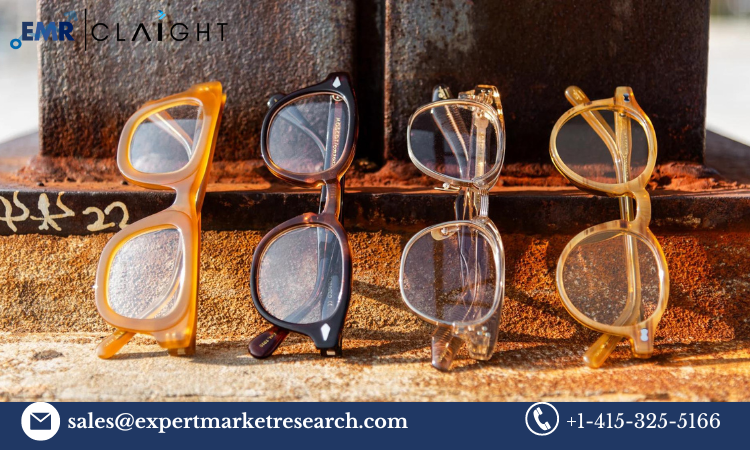Reading glasses are essential for millions of Americans experiencing age-related vision changes, especially presbyopia. As the population ages, the demand for reading glasses is projected to grow significantly, with a compounded annual growth rate (CAGR) of 5.40% anticipated from 2024 to 2032. This market comprises both prescription and non-prescription options and is influenced by factors like changing consumer preferences, technological advancements, and increased focus on eye health.
In this blog, we will explore the reading glasses market in the U.S. through an in-depth analysis, covering everything from the factors driving growth to the market’s competitive landscape and future outlook.
Market Dynamics: What’s Driving the Growth of Reading Glasses?
1. Market Drivers:
- Aging Population: As the baby boomer generation ages, more Americans require reading glasses for presbyopia, an age-related condition that makes it difficult to focus on close-up objects.
- Increased Awareness of Eye Health: Public health initiatives and a rise in digital screen usage are heightening awareness of eye health, prompting more people to seek corrective lenses.
- Growing Fashion and Customization Trends: Eyewear has transformed from a functional item to a fashion statement. Consumers are increasingly opting for stylish frames, boosting demand for both high-end brands and affordable fashion eyewear.
2. Market Restraints:
- Alternative Solutions: The availability of alternative vision correction options, such as LASIK surgery and contact lenses, poses a potential restraint to the market. These options provide permanent or more discreet solutions compared to reading glasses.
- Pricing Sensitivity: With a broad range of products available, pricing remains a critical factor for consumers. Many may opt for inexpensive over-the-counter glasses, limiting growth for premium brands.
3. Opportunities and Challenges:
- Opportunities: The trend towards online shopping and customization offers substantial growth potential. Direct-to-consumer (DTC) brands are capitalizing on digital tools like virtual try-ons, allowing consumers to personalize and purchase eyewear from the comfort of their homes.
- Challenges: Regulatory standards for eyewear, particularly non-prescription lenses, create barriers for new entrants and small players. Quality control is also essential to maintain customer trust, especially in a health-related product.
Market Segmentation: Understanding the Product Landscape
Breaking down the market into segments helps paint a clearer picture of consumer preferences and the specific niches driving demand. Key segmentation categories include:
- By Product Type:
- Prescription Glasses: For consumers who require customized vision correction.
- Non-Prescription Glasses: Available over-the-counter for general use, popular among those who do not need a specific prescription.
- By Distribution Channel:
- Retail Stores: Optical stores, pharmacies, and supermarkets play a major role, especially for older consumers who prefer in-person shopping.
- Online Platforms: E-commerce has grown significantly, with brands offering a wide range of styles, easy return policies, and virtual try-on tools.
- By Frame Material:
- Consumers often consider frame material when purchasing reading glasses, with options including Plastic, Metal, and Eco-Friendly Materials for those seeking sustainable products.
- By Consumer Demographics:
- Age groups, particularly 40+ segments, dominate the market, with trends varying by gender and lifestyle needs. Customization is gaining traction, with younger consumers showing an affinity for fashionable frames.
Key Industry Players in the U.S. Reading Glasses Market
The U.S. market for reading glasses is highly competitive, with both established luxury brands and innovative new players striving for market share. Major players include:
- Guccio Gucci S.p.A.: Known for luxury and designer eyewear, catering to consumers seeking high-end options.
- Eyebobs: Aimed at providing unique and stylish frames, often appealing to a fashion-forward demographic.
- ThinOptics, Inc.: Specializes in ultra-compact, portable reading glasses, perfect for convenience.
- Bausch & Lomb Incorporated: A longstanding name in optical health, offering high-quality lenses.
- Warby Parker Inc.: A pioneer in the DTC model, known for stylish frames, affordability, and online shopping convenience.
- Zenni Optical, Inc.: Another DTC success story, Zenni offers affordable, customized eyewear with an emphasis on value.
Strategic Moves and Innovations:
These companies often drive market dynamics through strategies such as mergers, acquisitions, product expansions, and innovative collaborations. Many brands focus on e-commerce, personalized services, and incorporating sustainable materials in their frames to attract environmentally-conscious consumers.
Key Trends and Innovations Impacting the Reading Glasses Market
1. Fashion-Forward Eyewear: Reading glasses are now a part of the fashion industry, with consumers seeking a blend of style, comfort, and functionality.
2. Virtual Try-On Technology: Companies like Warby Parker have introduced virtual try-on tools, enabling customers to see how frames look without visiting a physical store, simplifying the purchasing process.
3. Lightweight, Durable, and Eco-Friendly Materials: Consumers increasingly prefer glasses made from sustainable materials. Lightweight frames made from advanced plastics and metals are especially popular for added comfort.
4. Anti-Reflective and Blue Light Blocking Lenses: With digital devices being a primary cause of eye strain, blue light blocking lenses are gaining popularity among reading glass users, further boosting market demand.
Consumer Insights: What Do U.S. Consumers Look for in Reading Glasses?
Understanding consumer preferences is key to market growth. U.S. consumers are increasingly looking for:
- Comfort and Fit: Especially among older demographics, comfort is paramount, with preferences for lightweight and durable frames.
- Fashion and Customization: Customizable options and stylish designs are highly appealing to younger consumers.
- Affordable Luxury: Premium brands are offering budget-friendly options to capture a wider audience, while budget brands are focusing on quality and style.
Distribution and Retail Landscape
The distribution landscape for reading glasses in the U.S. is evolving, with brick-and-mortar and online channels both playing significant roles.
- Brick-and-Mortar Stores: Traditional stores, such as optical chains and pharmacies, remain popular, particularly among consumers who prefer trying on frames before purchasing.
- E-commerce Boom: Online sales of eyewear are rapidly increasing, driven by DTC brands like Warby Parker and Zenni Optical, which offer affordable and stylish options coupled with user-friendly online experiences.
SWOT Analysis of the U.S. Reading Glasses Market
- Strengths: Established market with a strong demand base, quality products, and a wide range of options.
- Weaknesses: Competition from alternative corrective solutions, price sensitivity among consumers.
- Opportunities: Growth in online retail, advancements in customization technology, increased demand for eco-friendly products.
- Threats: High regulatory standards, competition from emerging brands, and the risk of low-quality imports.
Future Outlook: What’s Next for the Reading Glasses Market?
With a steady CAGR of 5.40% from 2024-2032, the U.S. reading glasses market holds promising potential. As more consumers seek corrective eyewear due to digital eye strain and aging, the market is expected to see continued innovation and growth. Trends such as sustainable materials, advanced lens technology, and digital shopping experiences are likely to shape the future of the industry.


